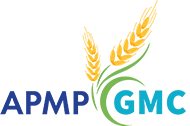By Pamela Keith
A Content Management System (CMS) is an application with a user-friendly interface that allows users to easily design and develop a knowledge base without ever understanding, writing, or interacting with programming code. In other words, it is sort of freaking AMAZING.
A fully-designed CMS is an organizational asset, especially when it comes to proposal management. A CMS can drastically increase your ability to access content efficiently and effectively for RFP responses, marketing promotions, and marketing material, which could help improve your win rate and bottom line. A CMS could contain everything from sales and business development pipelines to customer recommendations, past project performance, resumes, and more.
On the other hand, a poorly designed CMS is extremely time-consuming, frustrating, and could have negative impacts to your budget and operational efficiency. If your organization struggles with data management and process efficiencies, an upgrade or replacement of your CMS could redefine your company’s business development and growth trajectory.
Revamping a CMS or starting from scratch can be daunting tasks, to say the least. This is especially true if proper planning is not done from the start. Properly planning and designing the structure from the ground up will significantly improve the CMS’s use case, reduce stress during the project, testing, and Go Live, and drastically increases the probability of a successful outcome.
As a consultant who has helped clients evaluate and launch new CMSs, I recommend a planning process that follows these four phases:
Phase One – Current CMS Assessment
- Determine all the issues with the existing system
- Track all the key benefits that can be designed into the new system
- Brainstorm with current and future stakeholders to get insight on what’s needed
- Determine if the current CMS has reached its use case capacity
- If your current CMS has not reached its use case capacity, consider redesigning it
- If your current CMS has reached its capacity, consider replacing it
- Meet with key stakeholders to discuss outcomes of PHASE ONE
For the sake of this discussion, let’s say that a decision is made to purchase a new CMS. The next phases include:
Phase Two – Identify the Business Needs
- Meet with key leadership to discuss the current business needs
- Survey staff to determine which individuals and departments will need to access the system
- Identify SMEs who can help understand what features would be most beneficial
- Get all stakeholders onboard through direct or indirect involvement to get buy-in. After all, they will need to be committed to keeping the new system updated.
Phase Three – Research Current CMSs
- Start searching for the top 10 CMSs
- Setup free demos of the products that align with your business needs
- Invite key stakeholders to attend the demonstration
- Compare pricing, which should include features, technical requirements, customer support, updates, upgrades, and SLAs, to name a few.
Phase Four – Determine the Project Budget
- Meet with your organization’s key decision-makers to discuss the top three or four companies based on the top business need
- Purchase your CMS
Whether you’re starting from scratch or improving existing systems, it is vital to occasionally step back and assess if your internal systems and tools are best serving you and your customers. If you feel like your CMS isn’t quite helping you in the way it could be, at least start with Phase One and have a conversation about what it COULD be with the right investment… and what it could mean for your bottom line.
About the Author
Pamela Keith has worked in grant writing, grants office management, project management, Information Technology, and RFP responses for almost two decades. One of her hobbies is cryptocurrency education, trading, and investing. The industries she has worked in over the course of her career include Technology, Finance, Investment, and Energy. Her employers and clients have included small businesses, faith-based organizations, nonprofit organizations, and Fortune 500 corporations. Pamela holds a Bachelor of Science degree in Computer Information Systems from DeVry University. She has received formal project management training from DePaul University and has formal training in grant writing. She has completed training courses and webinars through Shipley Associates and APMP, respectively, and is currently enrolled in some of their future training courses and webinars. She has an avid interest in learning proposal writing compliance and plans to pursue APMP Foundation-Level Certification.
